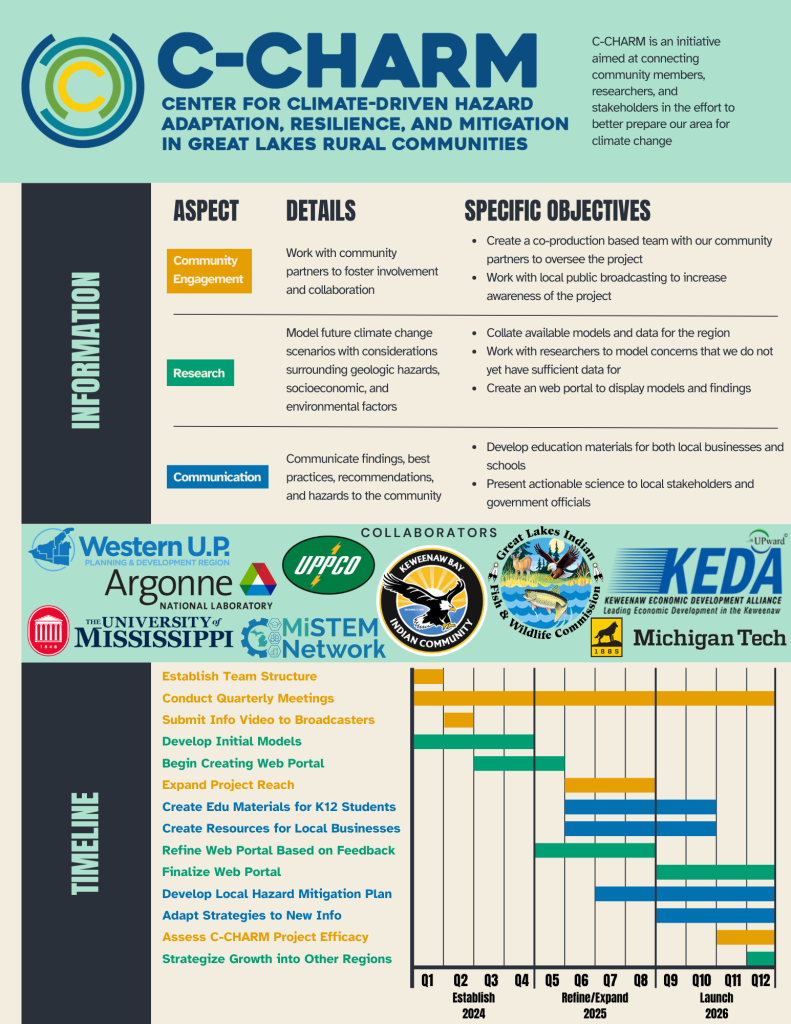As one of six DOE-funded Climate Resilience Centers, C-CHARM is grounded in a collaborative approach that involves communities, governments, research institutions, and DOE national labs.
Focus
The Center for Climate-driven Hazard Adaptation, Resilience, and Mitigation (C-CHARM) currently focuses on the six-country region of the Western Upper Peninsula of Michigan, located on the southern shore of Lake Superior. C-CHARM employs a hierarchy of numerical models to resolve microclimates and weather extremes and project climate change impacts on geohazard risks and energy system disruption at the community-to-county scales in WUP.
Co-production of Knowledge
By embracing a co-production approach with active stakeholder engagement, C-CHARM integrates regional climate modeling and risk assessment into a toolkit that empowers WUP’s local and tribal governments and communities to make informed decisions for climate-resilient adaptations.


